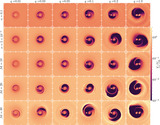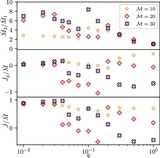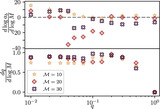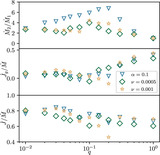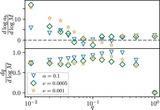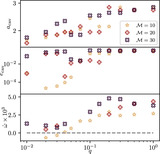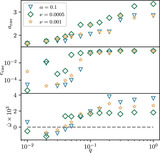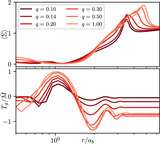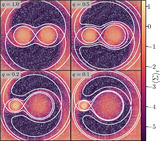Image Details
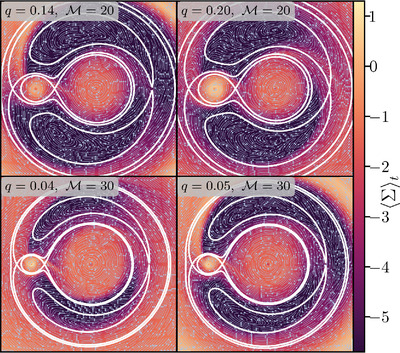
Caption: Figure 11.
Time-averaged profiles of the disk surface density, with streamlines of the time-averaged momentum field, in the frame of the binary for a few of the simulations depicted in Figure 10 in which eccentric modes appear at intermittent mass ratios. As binaries accrete from disks with prominent eccentric modes (﹩q=0.2,\,{ \mathcal M }=20﹩ and ﹩q=0.04,\,{ \mathcal M }=30﹩ here), gas that flows onto the primary more often leads it, contributing to a more positive torque. Additionally, disks with eccentric modes accrete in a more spatially uniform manner onto the secondary, while the secondary-bound accretion streams from disks without eccentric modes tend to lag behind the binary. The aforementioned effects conspire to create a much more negative gravitational torque on binaries accreting from disks; the difference in torque follows from a fundamental change in the accretion flow morphology, and the primaries actually accrete (proportionally) more from disks without eccentric modes than from disks with prominent eccentric modes.
Copyright and Terms & Conditions
© 2024. The Author(s). Published by the American Astronomical Society.


